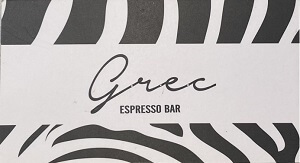Death is one of the last sacrosanct taboos. In the past, art and religion were ways of dealing with loss, and grief. Nowadays, it seems that technology is offering consolation and psychological support to the mourning. Bereavement and grief cause acute pain to people who have lost someone very dear to them. Their only wish is always to reconnect with that person, although this is impossible. Technology makes this wish come true through digital means.
The need to hold on to something tangible, a piece of one’s dead loved one led people to mementos like brooches or jewelry made of the hair of the deceased which were particularly eminent during Victorian times, the ‘empty nest’ being a very popular motif. Post mortem photographs were also in great demand since mortality rate was particularly high. Morbid as it sounds, it gave relief to the remaining living members of the family and assurance that they will never forget how the deceased person looked like, also, providing them with comfort and peace.
Currently, the digital resurrection of stars, actors, musicians, especially, seems to be quite popular, with a number of famous bands paying their respects to and meeting again late members. Freddie Mercury, appears in the form of hologram and on huge video walls during concerts of the band, singing along with the audience. Brian May, the Queen guitarist, is seen by thousands of people greeting Mercury on stage at the final couple of ‘Love of my life’’, crying as he is shaking hands with his late friend and then the dead artist fades out in the darkness.
Maria Kallas, gave a post mortem concert performing with a live orchestra for 2000 fans, thanks to hologram technology. Roy Orbison has also been busy performing digitally after his death as Amy Winehouse will be, touring posthumously. In the near future, we are going to be seeing holograms in our homes instead of watching TV or even looking at photographs of deceased loved ones.
Recently, technology brought back to (digital) life a little girl, in a documentary called ‘Seeing you’’, produced by South Korean Broadcast MBC. Seven-year-old Nayeon, died in 2016. The mother was not only grieving the sudden death of the girl but was also worried that she might forget how the girl moved about, her smile and laughter, the smell of her hair and her bright eyes. Through VR she had the chance to see Nayeon again, ‘touch’ her, and feel her around.
The director of the documentary and creator of the VR environment where Nayeon now lives, stated that there are many things often left unsaid when someone dies suddenly, which haunt the living. He sees this process of reuniting with the dead person as a ritual, as closure. It offers the living the chance to liberate themselves from grief. Seeing once again the person one lost, against all odds, can work on many psychological levels. Phenomenology and Rene Magritte would object to the phrasing above. One cannot actually meet the deceased but their virtual hologram. ‘Ceci n’est pas une pipe…’ No?
Nevertheless, the mother really believed, while in the VR environment, that she, indeed, saw Nayeon. The interpretation is for us to decide but the psychological need strikes as clear. Ethical questions arise.
Dalí’s last public statement was: ‘When you are a genius, you do not have the right to die, because we are necessary for the progress of humanity. Even though he has been gone for a few decades, Artificial Intelligence is bringing him back to the Dalí Museum in St Petersburg, Florida. Technology allows people for a moment to believe that there is such a thing as immortality, while Dalí says, in his hologramming form that it is good to be back. To understand art you need to understand the artist. This technology helps the audience empathise with Dali as a person and so appreciate a special kind of intimacy.
Dalí says ‘I do not believe in my death. Do you?’. Do we actually believe in death today or should we? Are we intolerant to death? This paper is about the complexities of death, ethical issues, grief, art, ritual, loss and their dealings by AI, technology and the psychological grounds for digital resurrection. Here is another famous Dalí quote: "If someday I may die, though it is unlikely, I hope the people in the cafes will say, Dalí has died, though not entirely". This is the case this paper discusses, the impossibility of dying entirely in our times.
Back
SPONSORS
 Agora Restaurant Grill House
Agora Restaurant Grill House Lupin Aperitivo Espresso Bar
Lupin Aperitivo Espresso Bar






























